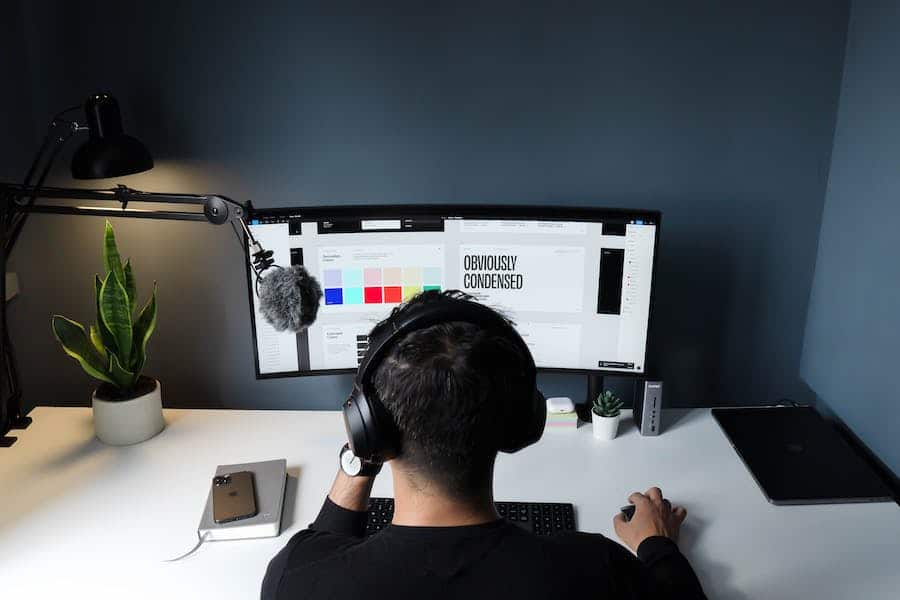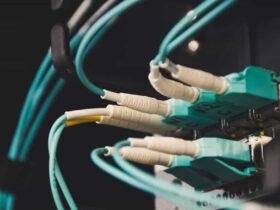In the age of virtual communication, content creation, and online collaboration, a microphone is often your vocal gateway to the world. Whether you’re participating in a video conference, recording a podcast, or streaming your gaming adventures, having a clear and audible voice is essential. But what happens when your microphone decides to play a trick on you, and your voice comes out as a mere whisper, barely audible to your audience? This enigma, “Why is my microphone so quiet?” has left many frustrated and scratching their heads.
In this exploration, we embark on a journey to demystify the common reasons behind a quiet microphone. From hardware hiccups to software stumbles, we’ll delve into the intricacies of microphone woes and equip you with practical solutions to ensure your voice resounds loud and clear, leaving behind the days of frustration and silent communication. Let’s dive in and unravel the secrets of microphone volume, one decibel at a time.
Why Is My Microphone So Quiet?
Your microphone might be quiet due to issues such as faulty cable, low sensitivity settings, or software configuration problems. To resolve it, check your hardware, adjust software settings, optimize your recording environment, and perform test recordings to fine-tune your microphone’s volume and quality.
The Most Common Reasons For A Quiet Microphone
There are plenty of reasons why your microphone may quiet. We can feel your pain when your favorite things suddenly stop working and you desperately need to work on them. Here are some reasons why your microphone gets quiet:
1. Microphone Sensitivity Settings:
One of the most common reasons for a quiet microphone is incorrect sensitivity settings. Microphones come with adjustable sensitivity levels, often referred to as gain or volume controls. If your microphone’s sensitivity is set too low, it will capture sound at a lower volume, resulting in quiet audio.
2. Hardware Issues:
Faulty or damaged hardware components can also lead to microphone issues. Loose cables, damaged connectors, or a malfunctioning microphone itself can cause low audio output.
3. Software Settings:
Your computer’s software settings can play a significant role in microphone volume. Incorrect settings in your operating system or recording software may be limiting your microphone’s output.
4. Background Noise And Acoustics:
Environmental factors, such as background noise and room acoustics, can affect your microphone’s performance. If your microphone is picking up more background noise than your voice, it can make your audio sound quieter.
5. Driver Problems:
Outdated or incompatible audio drivers can lead to microphone problems. Ensuring your drivers are up-to-date is crucial for optimal microphone performance.
Solutions To Boost Your Microphone’s Volume
Now that you have a better understanding of the potential causes, let’s explore some effective solutions to make your microphone louder and clearer.
-
Adjust Microphone Sensitivity:
Start by checking your microphone’s sensitivity settings. Depending on the type of microphone you’re using, you may find a physical gain control on the device itself or in your computer’s audio settings. Gradually increase the sensitivity until your voice sounds clear and adequately loud without distortion.
-
Check Hardware Connections:
Inspect all hardware connections, including the microphone cable, connectors, and any adapters or splitters. Ensure everything is securely plugged in and free of damage. If you notice any issues, replace or repair the faulty components.
-
Review Software Settings:
Access your computer’s audio settings and recording software to make sure they are configured correctly. Here’s how you can do it on Windows:
- Right-click the speaker icon in the taskbar and select “Open Sound settings.”
- Under “Input,” select your microphone and click “Device properties.”
- Go to the “Levels” tab and adjust the microphone volume slider as needed.
On Mac:
- Open “System Preferences” and click on “Sound.”
- Go to the “Input” tab and adjust the input volume slider for your microphone.
-
Improve Your Environment:
Minimize background noise in your recording space by using soundproofing techniques or a noise-canceling microphone. Consider using a pop filter to reduce plosive sounds (like “p” and “b” sounds) that can cause distortion.
-
Update Audio Drivers:
Ensure that your audio drivers are up-to-date by visiting the manufacturer’s website or using Windows Update (for Windows users). Outdated drivers can lead to compatibility issues and lower microphone performance.
-
Invest In A High-Quality Microphone:
If you’ve tried all the above solutions and still face microphone issues, it might be time to invest in a better-quality microphone. A higher-end microphone can provide better sensitivity and audio clarity, improving your overall sound quality.
-
Use Post-Processing Software:
After recording, you can enhance your audio using post-processing software. Programs like Audacity or Adobe Audition offer tools to normalize and amplify audio, reducing background noise and improving overall volume.
-
Consider An External Audio Interface:
For advanced users and professionals, an external audio interface can significantly improve microphone performance. These devices offer enhanced control over microphone settings and can deliver studio-quality audio.
How Can I Make My Mic Stronger?
To make your microphone stronger and improve its audio output, follow these steps:
- Adjust Microphone Sensitivity: Access your microphone’s settings, either through your operating system or recording software, and increase its sensitivity or gain. Be cautious not to set it too high, as it can introduce unwanted noise.
- Use A Pop Filter: Attach a Pop filter in front of your microphone. This accessory helps reduce plosive sounds (like “p” and “b” sounds) and can result in clearer and stronger audio.
- Position Your Microphone Properly: Place the microphone closer to your mouth, around 4-6 inches away, for better sound capture. Experiment with angles and distances to find the sweet spot for your voice.
- Optimize Your Environment: Minimize background noise by soundproofing your recording area or choosing a quieter location. Eliminating external disturbances can significantly strengthen your microphone’s performance.
- Upgrade Your Microphone: Consider investing in a higher-quality microphone with better sensitivity and noise-canceling features for a stronger, clearer sound.
By implementing these measures, you can boost your microphone’s strength and enhance your audio quality, making your voice more prominent and distinct in recordings or virtual communications.
Conclusion
Having a quiet microphone can be frustrating, but with the right adjustments and troubleshooting, you can enjoy crisp and clear audio in no time. Remember to start with the basics, such as adjusting sensitivity settings and checking hardware connections. If the issue persists, explore more advanced solutions like updating drivers or investing in a higher-quality microphone. By following these tips and addressing the root causes of your microphone’s low volume, you’ll be well on your way to enhancing your audio quality and ensuring your voice is heard loud and clear in all your virtual interactions and content creation endeavors. Say goodbye to the days of asking, “Why is my microphone so quiet?” and hello to superior audio performance.
FAQ’s
Why Is My Microphone Picking Up Background Noise, And How Can I Reduce It?
Background noise can be picked up by microphones due to their sensitivity. To reduce it, consider using a directional microphone, position the microphone closer to your mouth, and use noise reduction settings or software. Additionally, soundproofing your recording environment can help minimize external noise.
How Can I Prevent My Microphone From Distorting Or Peaking When I Speak Loudly?
Microphone distortion occurs when the input level exceeds the microphone’s capacity. To prevent it, adjust your microphone’s gain or sensitivity settings to an appropriate level. You can also speak further away from the microphone or use a pop filter to reduce the impact of loud sounds.
What Is Phantom Power, And Do I Need It For My Microphone?
Phantom power is a method of providing power to condenser microphones that require it for proper operation. If you’re using a condenser microphone, check its specifications to see if it requires phantom power. If it does, you’ll need a device such as an audio interface or mixer that can supply phantom power to the microphone for it to function correctly. Dynamic microphones typically do not require phantom power.

























Leave a Reply